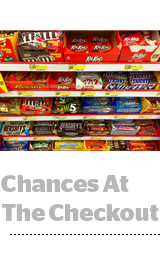 Consumer packaged goods (CPG) brands are threatening steep investment pullbacks if higher standards aren’t met on marketing measurement and transparency.
Consumer packaged goods (CPG) brands are threatening steep investment pullbacks if higher standards aren’t met on marketing measurement and transparency.
And those Fortune 500 CPGs, including Procter & Gamble, Unilever, Mondelez, Nestlé and Kraft, seem to be holding to their lines in the sand. In the past few weeks, holding companies like IPG, WPP and Havas, as well as other industry pillars like Nielsen, have attributed market downgrades to CPGs’ flattening digital ad budgets.
But these changes haven’t affected Facebook’s CPG business, said the social network’s VP of global client partnerships, Will Platt-Higgins, who runs its enterprise CPG accounts. Even if CPGs as a whole are pulling digital spend, there are some important nuances.
“It definitely is true that growth for a lot of the large CPG companies is challenged, but it’s not universally true,” Platt-Higgins said. “Major beauty companies may be doing better than food and confection businesses, for instance.”
AdExchanger spoke to Platt-Higgins about the priorities he’s seeing from the world’s biggest product brands.
AdExchanger: How has the CPG pullback on digital marketing affected Facebook?
WILL PLATT-HIGGINS: We’re in a fortunate position. All of our verticals are growing, including CPG. What definitely has piqued people’s attention, not least in the financial papers, is Procter & Gamble’s announcement that a large sum of money had been pulled back from digital. People read that and think it’s seismic.
But P&G and CPGs are going to advertise where their consumers spend time. And people don’t appreciate that we have a strong, growing partnership with P&G and other big CPGs that are pushing these industry trends. If anything, we’re being brought earlier into the mobile creative and strategy planning.
What feedback have you gotten from those CPGs, and what are they looking for from Facebook?
There are two broad themes they’ve been public about on this topic. The first is that in the past year or two they started to say, “We overpivoted too narrowly into targeting just because the tools were there, and we’re going to go back to broad reach campaigns.”
The other focus is cleaning up the media ecosystem, since ads shown to bots or ads that can’t be seen aren’t doing anything for their business. If you’re proving value, then you aren’t part of that budget being cut out.
Conversations have shifted from around measurement to optimization. In 2013, we’d have the head of marketing science at the front of the room explaining how we see a dollar on Facebook tied to cans of soft drinks or whatever they’re selling. Now they show up and say, “This is what drives real-world success,” and optimize to that.
What are they using to measure or attribute that success? Is it working with Facebook’s own foot-traffic products and attribution services?
We are doing pilot work with some clients on linking phones to a store, things like that. But CPGs will put real heft behind investments they see driving store transactions. That’s why I think the Datalogix and Nielsen Catalina Solutions are the real turnkeys for CPG ad tech budgets.
CPG giants have been griping about digital media, and walled gardens in particular. Meanwhile, a lot of startup CPG hits have gotten big off of Facebook. How does that disparity go over with your clients?
It’s just a fact that new market conditions have democratized the ability for all sorts of people across categories to start a new business and potentially reach a lot of people. The challenge is it’s a fundamentally different business model selling to a retail consumer versus getting people to an online sale or subscription.
The digital startups have a big advantage because they get a stream of high-conversion signals. They’re going to be much more effective at retargeting for a sensible next purchase, or they’re going to know when someone abandoned a cart.
But to drive business in stores, you’re focused on reach and frequency, and creative geared more for broad appeal. It’s a very different mentality.
How are traditional CPGs bringing in that digital-first approach? Do those strategies integrate effectively?
Until fairly recently, either that direct-to-consumer capability hasn’t existed or it’s been siloed within the organization. But there’s a lot more effort recently to sync up those capabilities.
The integrations could be through a deal, like a subscription grooming company that gets bought and then the business learns from the model and looks for ways to scale it to other brands or regions. [See Dollar Shave Club, a subscription shaving startup big on Facebook that Unilever acquired for $1 billion last year.]
It’s a tough landscape, so what’s the priority for CPG marketers right now?
For me, driving growth in stores is at the top of the CPG list. That’s where they’re spending the lion’s share of their time to build and rebuild their brands.
They’re looking at subscription businesses very closely and trying to learn from the model, but they’re not thinking about getting serious with the subscription game. They’re thinking about how to get back to broad brand appeal and how to get consumers to buy in a store.
This post was syndicated from Ad Exchanger.

More Stories
WBD Introduces Out-of-Home Member Plan as It Begins Max Password Crackdown
Deep Blue Is Building a Women’s Sports Yacht Club at Cannes
Sinclair SVP of Station Operations to Retire in June